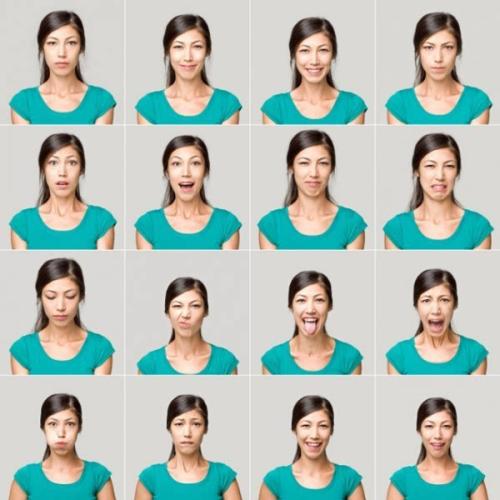Facial pain expression is an important modality for assessing pain, especially when a patient's verbal ability to communicate is impaired. A set of eight facial muscle based action units (AUs), which are defined by the Facial Action Coding System (FACS), have been widely studied and are highly reliable for pain detection through facial expressions. However, using FACS is a very time consuming task that makes its clinical use prohibitive. An automated facial expression recognition system (AFER) reliably detecting pain-related AUs would be highly beneficial for efficient and practical pain monitoring. Automated pain detection under clinical settings is viewed as a weakly supervised problem, which is not suitable general AFER system that trained on well labeled data. Existing pain oriented AFER research either focus on the individual pain-related AU recognition or bypassing the AU detection procedure by training a binary pain classifier from pain intensity data. In this paper, we decouple pain detection into two consecutive tasks: the AFER based AU labeling at video frame level and a probabilistic measure of pain at sequence level from AU combination scores. Our work is distinguished in the following aspects, 1) State of the art AFER tools Emotient is applied on pain oriented data sets for single AU labeling. 2) Two different data structures are proposed to encode AU combinations from single AU scores, which forms low-dimensional feature vectors for the learning framework. 3) Two weakly supervised learning frameworks namely multiple instance learning and multiple clustered instance learning are employed corresponding to each feature structure to learn pain from video sequences. The results shows 87% pain recognition accuracy with 0.94 AUC on UNBC-McMaster dataset. Tests on Wilkie's dataset suggests the potential value of the proposed system for pain monitoring task under clinical settings.
翻译:急性疼痛表征是一种评估疼痛的重要方式, 特别是当病人的言语交流能力受损时, 急性疼痛表征是一种评估疼痛的重要方式。 一套由面部肌肉编码系统定义的8个面部肌肉动作单位( AUs) 已经进行了广泛研究, 并且非常可靠, 可以通过面部表达方式进行疼痛检测。 但是, 使用 FAS 是一项非常耗时的任务, 这使得其临床用途难以使用。 一个自动面部表情识别系统( AFER) 可靠地检测与疼痛有关的AUsist 。 在临床环境下, 自动检测与疼痛有关的AFER 准确度被视为一个薄弱的监管问题, 并不适合以贴有良好标签的数据进行训练的一般 AFER 系统 。 现有的止痛表AFER 研究或者绕过AUSOS 检测程序, 通过培训疼痛强度数据的二进制分级分析器, 我们用AFER在视频框架上标记的 AFER, 和 RED IM 的双向 AU 双向 Aloeal 数据结构, 显示, 双向 AV 双向 AVLLILIL 数据结构,, 显示, 双向双向双向AFLLLL 学习的计算, 双向ALLLIL 数据结构 双向ALLLLLILL, 计算, 数据结构,,,, 双向双向ALLLLLLAST AV,,, 双向AV 数据表表表表表表表表表表表表表表表表表表表表表,,,,,,,,,, 。




